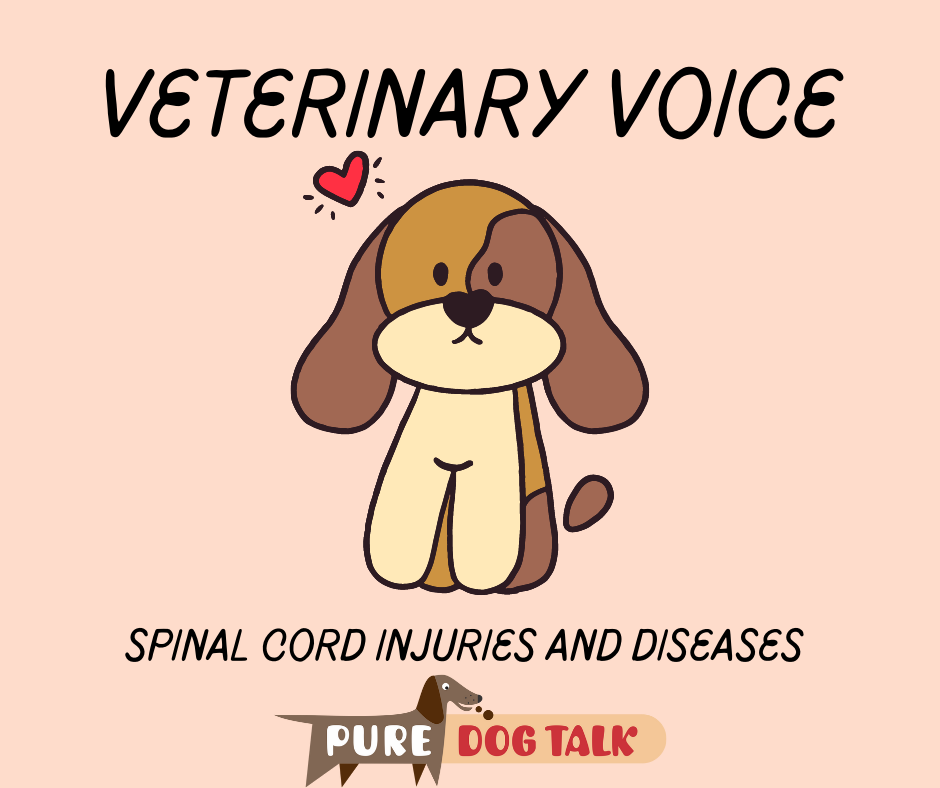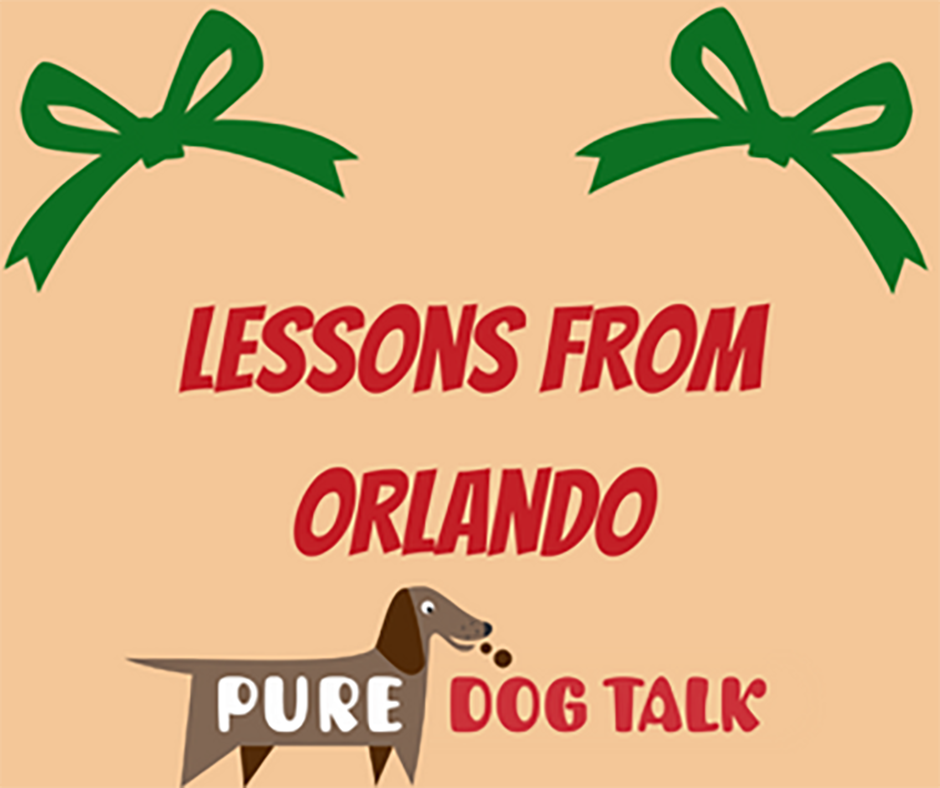519 – Spinal Cord Injuries and Diseases on Veterinary Voice

Spinal Cord Injuries and Diseases on Veterinary Voice
Dr. Dan Griffiths, DVM, joins his wife Dr. Marty Greer, DVM to discuss trauma and diseases of the spine in this month’s Veterinary Voice.
“As far as spinal injuries or spinal conditions go in dogs,” Griffiths said, “I kind of look at it as there’s about three or four things that can cause it. One is trauma, as you’ve been saying. It can be from hit by car, can come from a dog-on-dog type thing where they run into each other, it can be a running dog falling into a hole. Those are all trauma incidences.
“Dogs with spinal injuries and/or conditions can also come from a congenital situation. The poster child for those is dachshunds, where they have disc compressions that just happen spontaneously, usually not related to trauma but are prone to it due to their genetics. And then we also get into other things that can be in the spinal cord such as tumors of the spinal cord. You can look at degenerative spinal diseases such as degenerative myelopathy, which we’re very familiar with in our corgis and German Shepherds and Chesapeake Bay Retrievers. So there’s a number of things that all fit into spinal cord mishaps. Surprisingly enough there is a condition called FCE which is … actually a blood clot that causes paralysis because of getting caught in the spinal cord. We call it a stroke of the spinal cord.
“Trauma is probably second (most common) on the list as far as spinal cord problems. The number one cause is the achondroplastic breeds like Dachshunds, where they have a congenital propensity to hardened disks and the disks exploding up and expanding up into the spinal cord causing partial paralysis or full paralysis.
Discussing the use of DNA testing for IVDD, Greer offered a note of caution about how we use those results in a breeding program.
“Like all DNA tests, I tend to be a little skeptical of the accuracy the application, how we use that information, but it’s out there. It’s something worth discussing, but be careful what you use it for,” Greer said.
Treatment
“Treatments can go anywhere from strict cage rest,” Griffiths said “and using a non-steroidal anti-inflammatory drug or a steroid drug to takedown inflammation of the disks to laser therapy. We use a lot of cold laser therapy on those situations. We use some other drugs such as gabapentin to decrease nerve pain. If it’s severe enough where the patient is actually paralyzed or has no use of its rear limbs, surgery is indicated.
“Most general practitioners aren’t doing back surgery, you’re looking at a neurologist to do back surgery or a very competent general surgeon, and also they have the capability of having MRI’s or CAT scans available to diagnose and locate the bad disks. A flat film or a plain X-ray may give you some indication of a collapsed disk space where the vertebrae are closer together than what they should be. But the gold standard for these is MRI’s or CAT scans where you can actually see compression of the spinal cord with the disc material at that time. That’s what the surgeons are requiring now is to identify where the lesion is.
Spinal joints
“Between each vertebra there’s about 8 joints. They’re called facets. That’s where they articulate between the two vertebrae. We do see a lot of damage to those in trauma. We also see arthritis in those due to aging. We see a condition called Spondylosis, where we have calcium bridging of those joints. So, arthritis in the spine is pretty devastating in older patients. They can have arthritis in their spine and do pretty well with it but if they have any type of trauma like falling down the stairs, being rolled by another dog those type of thing, it upsets all that arthritis in there and then you can see some pretty acute pain.
“The whole goal of our crate rest and our anti inflammatories is to have that joint somewhat back to normal. Now most of these joints, if they are injured, our best case scenario is that they stabilize. But now that they’ve been injured, they also lend themselves very easily to arthritis in the coming months and or years after an injury.”
Listen in for more insight from two great veterinarians on degenerative myelopathy, Wobbler’s Disease and much more.
Our Valued Corporate Sponsors:
Our Esteemed Advertisers:
Our In-Kind Supporters:
KNOWLEDGE IS POWER — FRANCIS BACON
When you become a patron of Pure Dog Talk you’ll tap into an exclusive community of experts to help you and your dog be blue-ribbon best at whatever you do with your purebred dog! Your support helps keep the MP3's rolling at Pure Dog Talk!
As a supporter, you’ll immediately gain access to the weekly Pure Pep Talk SMS, Pure Pep Talk private Facebook group, and priority emails. Patrons can choose to level up to the After Dark Zoom and a Patrons Digital Badge for their website— even a private counseling session with Laura on any topic.

DON'T MISS AN EPISODE!!












